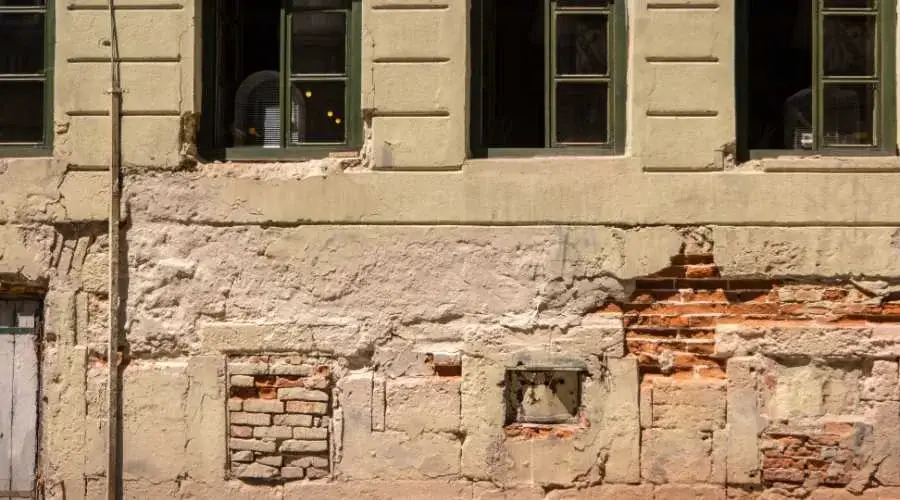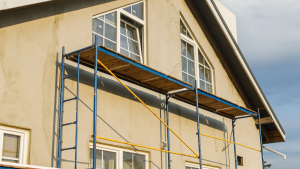Choosing the right siding material for your home can be a daunting task, given the wide range of options available. Each material has its own advantages and considerations, and it’s crucial to make an informed decision that suits your needs and preferences. In this article, we will compare stucco with other popular siding materials to help you understand the benefits of stucco and determine if it’s the right choice for your home.
Stucco: A Timeless and Durable Option
Stucco is a traditional siding material known for its timeless appeal and durability. Composed of cement, sand, lime, and water, stucco offers several advantages that make it an attractive option for homeowners.
One of the key benefits of stucco is its exceptional durability. It can withstand various weather conditions, including strong winds, rain, and fire. Stucco is also resistant to rot, pests, and fungal growth, making it a low-maintenance choice for homeowners. Additionally, stucco provides excellent insulation properties, helping regulate the temperature inside your home. It acts as a natural barrier against heat and cold, reducing energy consumption and providing long-term cost savings.
Moreover, stucco offers versatility in terms of design. It can be applied in a variety of textures and finishes, allowing you to achieve the desired look for your home. Whether you prefer a smooth and sleek appearance or a textured and rustic charm, stucco can be customized to meet your aesthetic preferences.
Vinyl Siding: Cost-Effective and Low Maintenance
Vinyl siding is a popular choice due to its affordability and low maintenance requirements. Made from polyvinyl chloride (PVC), vinyl siding offers a wide range of colors and styles to suit different architectural designs.
One of the main advantages of vinyl siding is its cost-effectiveness. It is typically less expensive than other siding materials, making it an attractive option for homeowners on a budget. Vinyl siding is also relatively easy to install, reducing labor costs. Another benefit of vinyl siding is its low maintenance requirements. Unlike stucco, vinyl siding does not require painting or staining. It is resistant to fading, rotting, and pests, and can be easily cleaned with a pressure washer or a mild detergent solution.
However, it’s important to note that vinyl siding may not offer the same level of durability as stucco. It can be prone to cracking, warping, and fading over time, especially in extreme weather conditions.
Fiber Cement Siding: Durability and Versatility
Fiber cement siding is a composite material made from cement, sand, and cellulose fibers. It is known for its exceptional durability and versatility, resembling the look of wood siding without the associated maintenance requirements.
One of the main advantages of fiber cement siding is its durability. It is resistant to rot, pests, and fire, making it a suitable choice for homeowners looking for long-lasting siding.
Fiber cement siding can withstand harsh weather conditions, including strong winds and heavy rain.
Fiber cement siding also offers versatility in terms of design. It can be manufactured to mimic the appearance of various siding materials, such as wood, stucco, or even brick. This allows homeowners to achieve the desired aesthetic without the drawbacks of the original materials.
However, fiber cement siding requires regular maintenance, such as painting or staining every few years, to protect it from moisture and UV damage. The maintenance requirements can add to the overall cost of the siding over time.
Making the Right Choice
When comparing stucco with other siding materials, it’s important to evaluate your specific needs and priorities. Consider the following points:
1. Durability: Stucco is highly durable, while vinyl siding and fiber cement siding also offer good durability with some maintenance requirements.
2. Maintenance: Stucco requires minimal maintenance, while vinyl siding is low maintenance and fiber cement siding requires periodic painting or staining.
3. Insulation: Stucco provides excellent insulation properties, while vinyl siding and fiber cement siding offer some insulation benefits but may not be as effective as stucco.
4. Aesthetics: Stucco offers a timeless and versatile aesthetic, while vinyl siding and fiber cement siding can mimic the look of other materials but may not have the same level of authenticity as stucco.
5. Cost: Vinyl siding is typically the most cost-effective option, while stucco and fiber cement siding may have higher upfront costs but offer long-term value due to their durability.
6. Environmental Impact: Stucco and fiber cement siding are more eco-friendly options, while vinyl siding made from PVC has environmental considerations.
To make an informed decision, it’s recommended to consult with a reputable construction firm like CMB Wayne Stucco & EIFS. They can assess your specific needs, budget, and aesthetic preferences to help you choose the right siding material for your home.
The choice between stucco and other siding materials depends on factors such as durability, maintenance requirements, insulation, aesthetics, cost, and environmental impact. Each material has its own benefits, and it’s essential to evaluate your priorities and consult with professionals to determine the best option for your home. CMB Wayne Stucco & EIFS can provide expert advice and quality installation services to ensure your siding choice enhances the aesthetics and protection of your home. Visit CMB Wayne Stucco & EIFS to learn more about their services and schedule a consultation.


